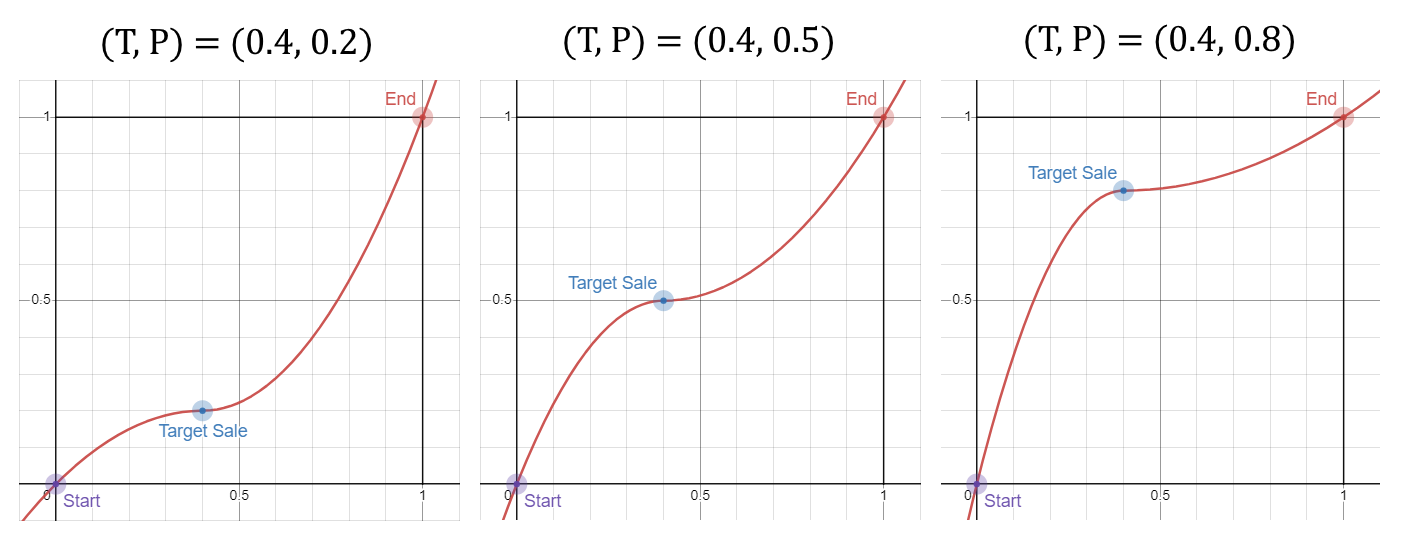Draw Auction
Unlike previous versions of PoolTogether, the V5 protocol is no longer reliant on permissioned controls to close the prize draws and instead incentivises 3rd parties to close the periodic draws using a sequence of timed auctions. The draw auctions outlined in these docs leverage an incentivization mechanism to encourage competition among third parties to complete the draws in a timely manner while maximizing cost efficiency.
Motivation
The PoolTogether V5 protocol is designed to be permissionless and self-sustainable, with daily prize pool draws that must run efficiently without any central control points. The completion of a prize pool draw requires at least two major steps:
- Requesting an onchain random number from a provably random source
- Awarding the prize pool draw with the resulting random number
To ensure the timely closing of draws, the protocol must incentivise each step of the process to complete in sequential order while automatically adjusting the rewards to account for variables that will change over time:
- Gas costs
- RNG request fees
- 3rd-party software and hosting fees for bidders
The V5 protocol requires a system that accomplishes these tasks consistently and efficiently on a daily basis.
Design
The design for the closing of PoolTogether V5 draws revolves around a sequence of timed auctions, each permissionlessly incentivizing the completion of a specific task.
Terminology
Auction
A period of time over which a reward from zero to the maximum value increases until a bidder completes the required task.
Prize Pool
The PoolTogether V5 prize pool contract that collects and distributes prizes. There exists one prize pool contract for each chain that the V5 protocol is deployed to.
Draw
A draw is the process by which a prize pool uses a random number to distribute prizes to winners determined by that randomness and the state of their deposits. Draws happen once every day on each prize pool.
RNG
Random Number Generation (or) Random Number Generator
Bots
3rd-party scripts that are designed to complete auction tasks to earn the available rewards.
Types of Auctions
There are two types of auctions that occur sequentially every draw period:
- Start RNG: this is the auction to incentivize the RNG request. Some RNG sources, such as the Witnet and Chainlink VRF, charge per use.
- Finish RNG: this is the auction that incentivizes the awarding of the draw after the random number has successfully been generated.
Auction Timing
The RNG auction for any given draw starts at the beginning of the following draw period and must complete within the auction duration. Following the start RNG auction, there is an “unknown” waiting period while the RNG service fulfills the request.
Once the random number is available, the finish RNG auction will rise in price until it is called to award the draw with the available random number. Once the draw is awarded for a prize pool, it will distribute the fractional reserve portions based on the auction results that contributed to the closing of that draw.
Rewards
Each Prize Pool has a prize “reserve” that grows whenever prize liquidations occur. The reserve on a prize pool is the source of the rewards for the auctions that are used to close the draws on that pool.
Parabolic Fractional Dutch Auction (PFDA)
Since the reserves on each prize pool can fluctuate significantly over time, the auctions need an automatic adaptive mechanism to try and ensure that auctions complete in a timely manner while still giving bots the time they need to bid as close to their profit thresholds as possible.
In early tests, a linear auction was used starting at 0% and ending at 100% of the reserve. This method quickly proved to be flawed by causing the protocol to pay over market value to the bots since the auction reward could change drastically over a matter of seconds when the prize pool reserves had significant value.
For example, if there are 10,000 tokens in the reserves and the auction has a duration of 2 hours, the auction price would go up over 80 tokens in a single minute. If the cost of completing the auction task is 20 tokens, then the protocol could overpay by a 300% margin or more within the first minute of the auction.
To solve this issue, a pricing function is needed that can:
- Cover the entire range of reserve
- “Slow down” the auction at the expected bidding price
- Automatically adjust the expected bidding price as external variables fluctuate
- Time the auction so that the expected bidding price always occurs at the same time in the auction
Given a target fractional bid price P where 0 ≤ P ≤ 1, and a target bid time T, where 0 < T ≤ 1 the strictly-increasing pricing function needs to start at price 0.0, reach P at time T, and end at price 1.0.
The following solution uses two mirrored pabarabolic curves that meet at point (T,P) and significantly slow down the auction price change near the target sale.
When x <= T:
When x > T:
Examples:

With PFDA pricing, each auction can adjust its target bid price to be the last sale price while setting the target sale time to be earlier in the auction duration to speed up the process and allow more time to be given to the other incentivized processes in the protocol (see info on the Claimer and Liquidator).
Conclusion
Through the use of adaptive pricing and a single source of randomness, the PoolTogether V5 protocol can efficiently leverage individual prize pool reserves to incentivize the consistent closing of draws across all deployed prize pools.